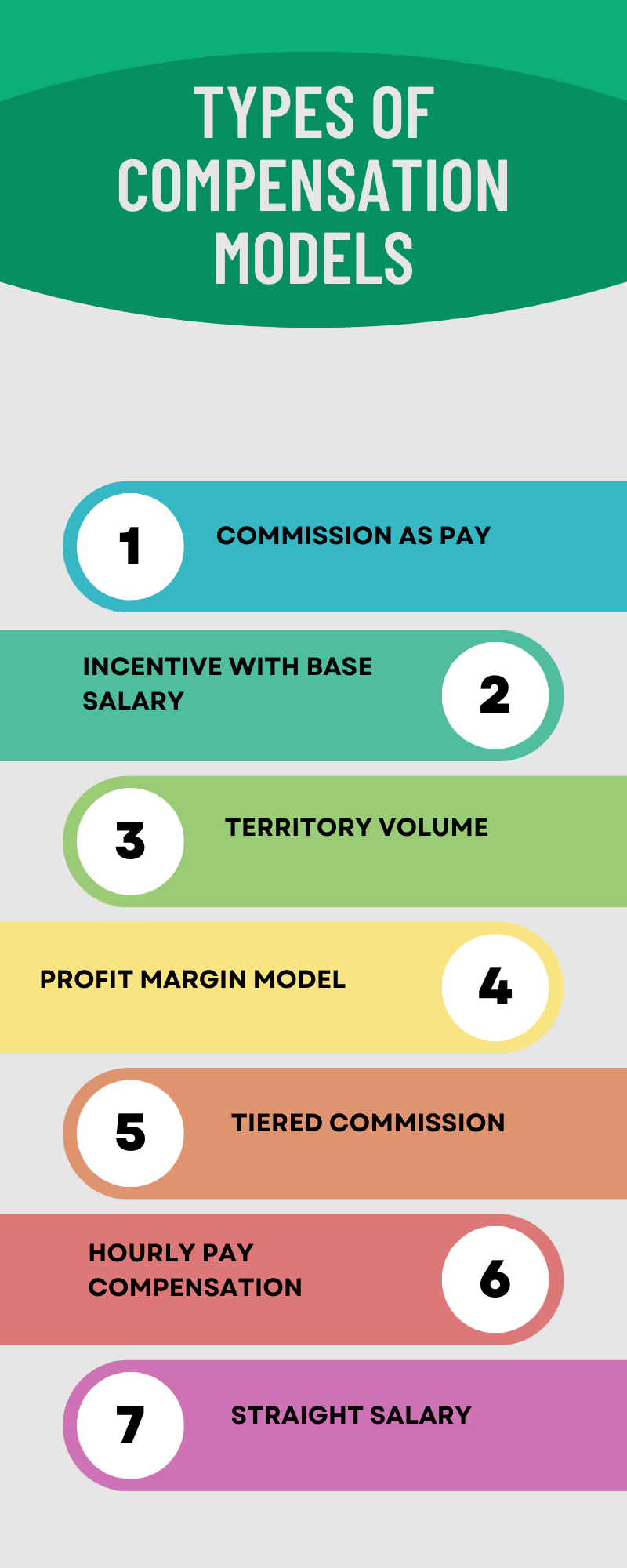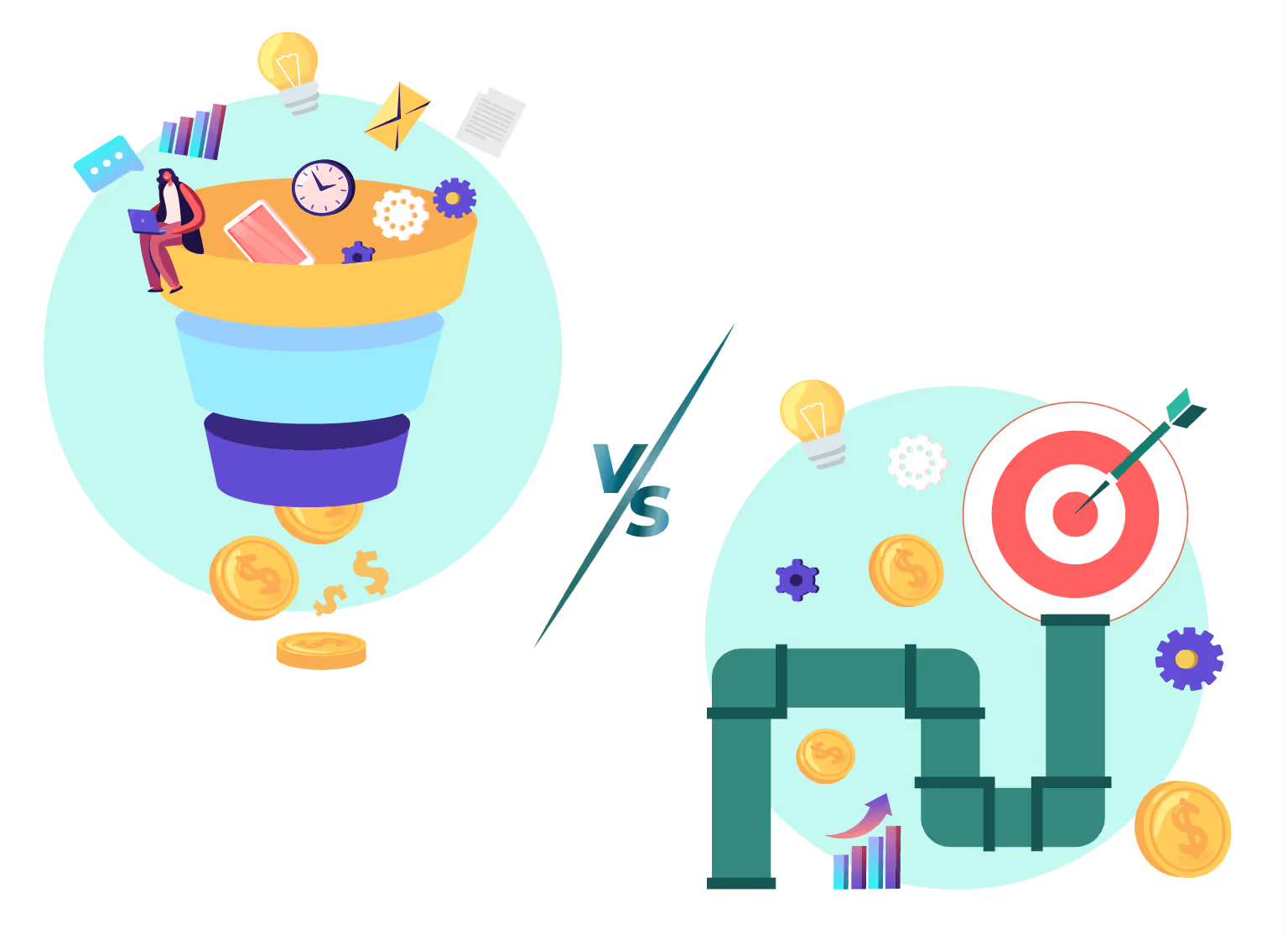
Blog
Effective Compensation Models for Employee Motivation & Retention
May 12, 2023


Key Insights
Surely the culture of work is changing. With trends like quiet quitting where employees do the bare minimum at work, it's hard to assure employee engagement and retention.
These changing trends demand the organization to have a built-in system that ensures employee satisfaction and validation. In sales, the best tool is incentive compensation.
But simply having an incentive compensation plan is not enough to ensure its effectiveness. This calls for understanding your organization and employees to draw up a compensation model that best suits your operations.
This article has everything you need to know about compensation models, its types, importance, and effectiveness.
Let's explore more about them.
What are Compensation Models?
While incorporating Incentive policy into their operations, organizations draw a clear picture of the components that make up their incentive compensation program. This includes the key performance index (KPI), experience and performance history of the salesperson, their designation and role in the organization, and the regular interval when the commission will be paid.
Hence, a sales compensation model describes the compensation process steps through which a salesperson will be paid their incentive compensation.
Let's explore these compensation models.
Types of Compensation Models

The commonly incorporated sales compensation models in organizational operations include:
- Commission as Pay
When the sales compensation plan offers only commission as pay to the salesforce it is called commission as pay. It surely motivates the salesperson to increase sales as it is the single component of the compensation play.
- Incentive with Base Salary
The most common sales compensation example is the incentive with a base salary. Here the salesperson has a fixed salary that they receive at the end of the month and an additional variable pay in the form of an incentive that gets paid at regular intervals, often in alignment with the sdr variable compensation plan.
- Territory Volume
When the sales planning process covers a huge territory where the sales team works in collaboration to achieve their quota, organizations choose to calculate the incentive based on the territory volume. The sales commission for the entire territory is calculated and split equally among the salesforce. This approach not only fosters teamwork but also aligns with a fair sales operations team structure, ensuring that the incentive distribution process is managed efficiently and accurately.
- Profit Margin Model
Under the profit margin model, the incentive compensation is calculated based on the profit the organization made in that quarter or year. It is a long-term model where the salesperson gets the profit percentage which is heavily dependent on their high performance.

- Tiered Commission
Organizations choose to divide their commission plan into various tiers to improve performance. For example, a company gives a 10% commission on every sale within their sales quota. When the salesperson goes above their assigned sales quota then the percentage increases to 12% and so forth.
- Hourly Pay Compensation
Under this compensation plan, employees are paid for the hour they work. This is commonly practiced in organizations with more part-time employees and with the least productivity expectations. Here they are paid for the work they do without any incentive to motivate them to aim higher.
- Straight Salary
When a salesforce is paid a fixed salary without any incentives or rewards, it is called a straight salary. Though not a commonly used compensation plan, a straight salary is used in organizations with small sales teams that are not involved in direct selling but in other related tasks. However, incorporating incentives to motivate employees can lead to increased engagement and productivity, especially when aligning rewards with specific performance metrics and goals.
Importance of compensation model in the sales planning process
.jpeg)
Surely there is no objection to the effectiveness of incorporating suitable sales compensation models in company operations. The primary reason for its success and acceptance is that it is of mutual benefit to both the organization and the employee.
So here is how it benefits both parties.
At the organizational level:
- From an organizational perspective, a well-structured OTE compensation model gives clarity on the calculation of compensation, the sales quota, the duration of incentive payment, and the performance expectations. This enhances the effectiveness of the sales compensation plan.
- Through the right compensation model, organizations can motivate their employees to derive the expected behavior and performance while ensuring employee engagement and retention.
At the employee level:
- When there is clarity and transparency in the way their hard-earned incentive compensation is calculated, it motivates the salesforce to work harder in achieving their goals.
- A realistic and achievable sales plan template will improve the focus and competence of the salesperson without making them feel overburdened to achieve more than their potential.
Why Is the Sales Compensation Plan So Important?
A sales compensation plan is an integral part of sales performance management. Time and again, incentive compensation models have proved their effectiveness in deriving the expected results from employees while keeping them happy and satisfied.
Surely who doesn't like to be validated in their work, especially through a hard-earned incentive?
In the present scenario, salesforce not only expects a good enough compensation model from their organization but also clarity and transparency in the way it's calculated. It is a rightful expectation considering it puts organizational integrity also at stake.
Automation of incentive compensation management ensures that companies can effortlessly keep their salesperson’s sheets clear while tracking their sales performance.
Kennect helps run your sales compensation programs in cruise mode to achieve operational efficiency. To know more Book A Demo Now!
ReKennect : Stay ahead of the curve!
Subscribe to our bi-weekly newsletter packed with latest trends and insights on incentives.
Thank you! Your submission has been received!
Oops! Something went wrong while submitting the form.
Your data is in safe hands. Check out our Privacy policy for more info






.avif)
.avif)







